The News-Hub/ Articles
Back to Articles
Recommended Articles
Environmental Racism: Why Are Black and Brown Communities Disproportionately Exposed to Pollution?
What is Environmental Racism? Where Did it Come From, and How Does it Discriminate Against People of Colour?
Environmental racism is an international social and climate issue that affects millions of people across the world, and yet it is not necessarily something that everybody understands, and many people still consider it to be a myth. The official definition of environmental injustice (or environmental racism), describes it as a “form of systemic racism, whereby communities of colour are disproportionately burdened with health hazards through policies and practices that force them to live in proximity to sources of toxic waste such as sewage works, mines, landfills, power stations, major roads and emitters of airborne particulate matter.”
Other typical features of environmental racism include unsafe workplaces, or poor housing/school conditions that expose inhabitants to hazardous pollution, or other conditions which have negative health consequences. Sometimes, victims of ER do not know they are being exposed to dangerous chemicals, so do not notice the physical symptoms until irreversible damage has been done to the body, like developing cancer. Environmental racism is a health issue that results in unnecessary sickness and death every year, most often in children, and it can be categorised as a form of racism as it demonstrates a significantly lower regard for the health of racial minorities than for white people.
Environmental racism (ER) is most commonly found in communities where there is a large minority population of people that are mainly poor, and the reason that this phenomenon is so common in America is because of the large wealth gap between white people and ethnic minorities. The cultural hangover of segregation has allowed inner city areas to remain poor and black, and the suburbs to remain mostly white, financially stable, and cleaner and safer. Wealth disparity in the United States is staggering - in 2018 millionaires made up 3% of the population, and yet the majority of federal officials were already millionaires when they entered office. The working class do not make the laws in America, and governing and official bodies are mostly white.
Significantly, it is primarily race that affects the placement of hazardous waste and other dangerous industrial facilities: Dr Robert Bullard’s landmark 2007 study found that not only were African American children five times more likely to develop health problems because of proximity to waste, but even middle class black Americans (making $50-60,000 a year) were more likely to live in polluted areas than poor whites (making under $10,000 a year). This is not an exclusively American problem either – black British children are also exposed to 30% more air pollution than white children, and the developing world suffers tragically from many serious environmental repercussions as a result of reckless consumerism in the west.

The environmental justice movement has a long and interesting history. It began in America with the United Farm Workers strike in the 1960s when the mostly Hispanic employees protested against worker illnesses that were caused by exposure to pesticides. The movement gained its name in 1982, after mass protests in Warren County, North Carolina, a predominantly black area in which the local government had forced a landfill site full of dangerous waste against the wishes of the local population. The injustice in Warren county brought the issue to the attention of the national press and even the president, and yet there has never been any substantial or effective legislation passed to ease the effects of environmental injustice.
The former President Donald Trump’s administration shrank the powers and funding of the Environmental Protection Agency (EPA), making government intervention in cases of ER even more unlikely. The EPA has an Office of Civil Rights which exists to investigate accusations of discrimination, and protect these vulnerable communities - they have received endless complaints over the last 22 years, but have never made a single conviction of environmental racism. For most environmentalists, this is rightly considered a disgrace, and for victims of ER it means justice remains unlikely.
A NAACP report in 2012 examined the location of the 378 coal fired power stations in the US - the 12 most problematic plants have two million Americans living within a three mile radius. These residents are 76% African American and have an average yearly income of $14,000 dollars. These individuals are ultimately far more likely to get sick and die as a result of living close to one of those power stations. This is grossly unfair, and combined with the disproportionate rates of death from COVID-19 and police brutality for black and brown people in America, this adds up to a system of oppression that cannot be ignored any longer by the mainstream climate movement. Nor should it be ignored by the federal government. In June of last year, the speaker of the House of Representatives Nancy Pelosi referenced the environmental justice movement, and it was integrated into the campaign policies of the new president Joe Biden. This suggests that the subject will be on the political agenda for the new administration, meaning we are likely to hear a lot about environmental justice in 2021.
Environmental Racism and Global Health
First, I want to give some examples of environmental racism on an international scale, as the dangers of climate change make the serious repercussions of unsustainable capitalism more visible across the world. Globalisation, which developed after the industrialisation of western society, has made it possible for huge amounts of dangerous waste to be taken from Europe and America, and dumped onto the developing world, where there is less regulation to prevent the dangerous side effects of chemical exposure.
In 2014, 44 million tonnes of electronic waste was produced internationally, and 80% of this waste is exported to Asia every year. What is left is shipped to Africa, India and Mexico. This can have dangerous health consequences. The town of Guiyu in China receives large quantities of electronic waste from the west: old computers, car batteries, refrigerators and televisions. Most of the people working in the e-waste industry here are extremely poor migrants from other parts of China, and mostly uneducated as to the dangers they are being exposed to by the decaying gadgets. The heaps of discarded material release heavy metals like lead into the water supply which causes the most serious consequence of environmental racism across the world: lead poisoning.
Lead poisoning is fatal in high doses, but even in small quantities it can cause irreversible physical and mental symptoms, especially in children. This can include brain damage, ADHD and a damaged IQ, as well as genetic defects like anencephaly, where babies are born with large parts of their brain missing. Circuit boards and copper wires are burned, or washed with acid, releasing toxic ashes into the water and soil, which in turn poisons the region’s agriculture, including the rice. The fumes can cause skin and eye diseases, as well as numerous cancers. Children living in Guiyu were found to have dangerously high levels of lead in their blood, which was shown to be causing stunted brain and nervous system development. Most of these children will be affected for life, and many will work in the e-waste sector long-term as safer jobs remain unavailable to them.
Old car batteries are exported in huge quantities to Africa, Vietnam and Mexico, which causes similar health repercussions. Approximately 500,000 used electronic devices are shipped to Nigeria every month by western businesses, often falsely and illegally marked as salvageable to trick the recipients into accepting the parts. Up to 100,000 people work in this sector in Nigeria alone, and by allowing this to happen, the companies responsible are placing a directly lower value on the health of these people than their own, by shipping the batteries abroad whilst knowing that they are most likely poisoning the individuals who are handling them.
In Senegal, the dirt is laced heavily with lead that has oozed out of used car batteries - in the early 2000s, the price of lead rose to such an extent that residents began to dig up the soil to resell the buried metal. It took 18 children to die before the authorities investigated and discovered that the cause was lead poisoning. Last year, 500 people in southern India were made unwell by potential heavy metal poisoning after the water supply was contaminated by open drains and landfill sites.

The shipping of mislabelled e-waste is illegal, and yet it happens constantly without making international headlines. In the UK these materials can safely be recycled, and still corporations are dumping it on developing countries to try and save a bit of cash. This system is integral to the continuation of western capitalism - if we cannot see the unsightly results of industry because it's shipped off to countries that ‘are already dirty,’ we can continue to enjoy our reckless consumerism guilt-free. Out of sight, out of mind. Can there be any clearer demonstration of environmental racism?
The unsafe exportation of waste is not the only form ER takes internationally - the structures associated with polluting industry (power stations for example) are typically built close to low-income or racial minority communities. This phenomenon can be found in every country on the planet. In 1981, the blood of the children from the town of Torreon in Northern Mexico was tested for heavy metals because of anxiety over their proximity to the Met-Mex Penoles lead smelter, the largest smelter in Latin America and the fourth largest in the world.
The dust from the factory (which contained lead arsenic and cadmium) was blowing into the homes of families downwind of the plant for decades; they were entitled to no legal protection and the results of years of exposure were devastating for the community. In this case, decades later when the children of the town were retested and the levels were worse, protest brought national attention to the cause and some attempts were made to provide justice through community investment and compensation. Steps were taken to ensure that this wouldn't happen again in Mexico but for many other victims of ER justice remains unlikely.
In 2008, a manganese factory in China poisoned 1,300 children - the plant was within 500m of two schools and a nursery, in which 60-70% of the students had dangerous levels of lead in their bloodstream. A similar event occurred in Nigeria in 2010 as poisoning from gold extraction killed 111 children. Lead smelting in Dong Mai, Vietnam caused 500 people to exhibit chronic symptoms, including 25 children experiencing brain damage - in 2015 the World Health Organisation estimated around 950 people had been inhaling particles of lead dust in the villages surrounding the plant.
Just one year ago, an LG polymers factory in Southern India experienced a chemical leak that killed 11 people, hospitalising hundreds at the hands of irresponsible industry. In 2010, the people of Mexico became the victims of environmental racism after the Deepwater Horizon oil spill, which also had a devastating effect on the natural environment. British Petroleum paid huge sums of compensation in an attempt to undo the damage they caused to American fishing businesses and to the ocean. But they also falsely claimed that the oil had never reached Mexico, and have never given any money in compensation for the contamination of their waters and the loss of fish stocks, which huge numbers of Mexican’s rely on for their livelihood.
Environmental Racism in the United States: Pollution, Industry and Agriculture
The United States has a long history of exploiting its own people through environmental racism, which can be partially attributed to its demographically segregated geography. Poorer, inner city communities tend to be crowded, polluted, and mainly black and Hispanic, while suburban areas accessible to only those with higher incomes, remain mostly white. Corporations, local governments, and industry have less regard for the health of poor black citizens than they do for suburban whites, who are more likely to have the wealth and political influence to fight back against environmental hazards and protect their community from exploitation.
The primary effect of this injustice is the prevalence of lead poisoning in black communities, especially in children. It is unlikely that children in white communities could be poisoned with no legal repercussions from the authorities in 21st century America. This is especially true given that lead is a neurotoxin that can be linked to reduced IQ, ADHD, autism, academic failure and criminality - features that racist attitudes already associate with ethnic minorities and low-income communities.
Documented examples of environmental injustice are extensive, but perhaps the most famous case study is Louisiana’s “Cancer Alley,” which follows 85 miles of the Mississippi river between Baton Rouge and New Orleans. Home to 150 petrochemical companies and 17 oil refineries, it is the most polluted area of the US and populated by mostly black people, the descendants of the free slaves that settled here after the American civil war.
The extensive pollution of the air, water and soil has all but decimated the surrounding cities and led to widespread cancer outbreaks and death: in Mossville, 91% of residents experienced health problems related to the surrounding industry. The famous and controversial Denka Performance Elastomer plant on the banks of the river has caused the locals’ chances of contracting cancer to increase 800 times; the area is more or less unlivable, but many residents cannot afford to relocate or do not want to abandon their cultural home.
Baton Rouge’s black neighbourhood is exposed to the City’s North Wastewater treatment plant, and in 2009 the residents were made sick by the plague of flies that descended on them, infected by the raw sewage at the plant. In the heat, the smell filled the city, and the residents turned to the EPA for help but were consistently ignored when they described the conditions they were being subjected to.
In 2015, Flint Michigan made international headlines when it transpired that the city was poisoning its own people through the contaminated water supply for over a year. During the process of changing suppliers, the city collected water from Flint river, which was polluted heavily by industry and agriculture (residents of Flint have been taught not to eat fish from the river because of the dirty water). The water had not been treated adequately and looked brown or orange, with particles floating in it. The city's 100,000 mainly black residents were losing hair and gaining rashes from showering in the water, and it had a bad smell and taste because it contained corroded iron, as well as dangerous E-coli and Legionella bacteria. It took the city officials 18 months to accept that anything was wrong with the water supply, which they insisted was safe to drink.
In this time, between 6 and 12,000 children were exposed to lead poisoning, and eventually 12 citizens were killed by legionnaires' disease from ingesting the bacteria. State health authorities launched a cover up operation which attempted to obstruct the official investigation into the legionella outbreak, including stopping scientists from looking into the undiagnosed deaths that could also have been a result of the water switch.
The investigation concluded that the death toll from the poisoning was most likely significantly higher than 12, and manslaughter charges were brought against the officials who withheld information from the public. Many more became unwell and the poisoning led to fertility problems in women and a 58% increase in foetal deaths. The Michigan Civil Rights commission concluded that the poisoning and slow response from authorities showed a clear disregard for black lives which stemmed from systematic racism - affirming that this would never have happened in a mostly white community.

Communities of colour are more likely to live close to power stations, oil refineries, lead smelters, landfill sites, sewage works, steel mills, incinerators and gas wells, all of which are sources of dangerous chemical waste. This is because industrial businesses, city authorities and oil companies actively choose to place these facilities near areas that are mostly low-income, black and Hispanic, because they believe these communities have less chance of successfully demanding compensation when health complications occur.
Corporations take advantage of the fact that less people listen when black people complain. These health problems are extensive and include fertility issues and increased risk of low birthweight in childbirth, as well as increased risk of lung problems, heart disease and strokes. This was established in Richmond California as the residents living for decades in the toxic emissions of the Standard Oil Chevron refinery encountered serious health repercussions, especially the African American community.
Industrial agriculture is one of the biggest sources of pollution in the US. The spraying of pesticides releases hydrogen sulphide and has been linked to respiratory disease. In North Carolina, the pig farming industry (which is located near mostly poor and black communities) has caused a buildup of the manure from around two million animals. This soaks into the soil, creating groundwater nitrates which cause genetic heart defects in babies. The farmers spray the manure onto the crops as fertiliser, filling the air and water with small fecal particles, and poisoning the Duplin County residents who are more likely to die of kidney or respiratory disease as a result. They have been petitioning the EPA for decades to no avail. In Florida thick levels of black soot cover the homes of the mostly black Glades residents of Pahokee, from sugar field burning as part of the sugar agriculture industry. They refer to it as the “black snow” that falls every October.
The proximity of industry is also an ER problem in Detroit, where the most polluted region is 71% black, and the local Marathon tank farm/oil refinery repeatedly breaks state emissions guidelines so that you can often see the colour of the sky change. In the Manchester and Harrisburg areas of Houston, which are 98% Hispanic, a local school was forced to close because of the dangerous levels of lead in the students’ blood. Every year the surrounding oil refineries and chemical/sewage plants release up to 484,000 pounds of toxic waste, leading the residents to question why all of Houston’s polluting industry had been built directly in their backyard. In Chicago just last year, the city’s car and metal shredding business (owned by General Iron) was moved from the white Lincoln Park area to the already polluted, mostly black East Side, which sparked an inquiry and unsuccessful legal challenges.
In every city in the US, from South Philadelphia where black people make up 60% of the population and 125 people die unnecessarily because of air pollution each year, to LA, black people breathe dirtier air than their white neighbours because someone chose for them to do so. It was the choice of somebody to place the Dakota Access Pipeline (a 1,200 mile long crude oil pipe) across the Standing Rock Sioux reservation, risking contamination of the tribe's water supply (Lake Oahe) and endangering their cultural heritage.
The pipeline is a controversial topic worldwide and a poster picture for the environmental justice movement; it was given the go ahead by Trump in 2016 but at the beginning of this year the new president signed an executive order to halt construction. Even though the project has been dogged by legal challenges, it is clear to protestors that the oil industry sees the cultural home of the Sioux tribe as theirs for the taking, and the people who live there expendable.
How Does the EPA Contribute to Environmental Racism?
The industrialisation of the developed world presented us with new problems, like what to do with the hazardous waste that is produced by factories, oil refineries and power stations; and in the 20th century governments have had to decide the best way to dispose of nuclear waste. The motive has always been to do this quietly and inexpensively, and the cheapest way has proved to be to dump it on the vulnerable and voiceless because they are the least likely to make a fuss.
In Warren County, North Carolina, the home of the environmental justice movement, the local authorities built a landfill site near the poorest and most ethnically diverse town in the state. The landfill was designed for the dumping of a chemical called polychlorinated biphenyl (PCP), and more than 6,000 truckloads of it was deposited there despite mass protests. The chemical is so dangerous the production of it was banned by the federal government a year later - but only after the damage had already been done to the health of the residents and the soil was left permanently saturated with PCP.
These events inspired a 1987 report, written by the United Church of Christ and their Commission for Racial Justice, named “Toxic Wastes and Race in the United States”. This report concluded that race was the number one factor in the placement of a hazardous waste facility; race was a bigger factor even than income and the geography of an area.
Living close to a landfill that contains toxic chemicals has unsurprisingly been linked to a plethora of health issues, including fertility and pregnancy issues, genetic defects in babies and infant mortality. That was decades ago, and yet in the 21st century, the same cultural conditions allowed for the residents of Tallassee, Alabama to be shunned by the EPA for 14 years when they made complaints of environmental racism.

The Stone’s throw landfill, a dumping ground for sewage, asbestos and other chemical waste, has been making the mostly black locals sick for years, as trucks full of hazardous waste drive through their town every morning to access the site. The EPA ignored the extensive legal complaints they received, and the landfill is still in operation today and it brings a lot of money to its shareholders. Of course, none of this wealth is seen by the residents of Tallassee. All of Alabama’s landfills are located near low-income black and brown communities.
After a spill of over 1 billion tonnes of coal ash into the Emory river in Kingston Tennessee in 2008 (the workers who were left to clean the mess developed various forms of cancer), the Tennessee valley authority shipped the ash to Uniontown Alabama, a low-income black community. The EPA declared the ash to be non-hazardous and the community was left to suffer, completely unprotected by the EPA’s ineffective ER laws.
In 2016, a two year legal battle began over plans to construct a Class 1 hazardous waste site approximately 20 miles east of the town of Laredo, Texas. The project belongs to the descendant of a well-established family of Laredo, Carlos “C.Y.” Benavides III, the owner of the Yugo Ranch, which was handed down to him by his grandfather. He aims to transform this ranch into the Pescadito Environmental Resource Center (PERC), a “Megadump” which will receive waste from across Texas, Mexico, Arizona and other states, including industrial, municipal and fracking waste, as well as coal ash which contains heavy metals.
The ranch is close to a creek which leads to the Rio Grande, risking the contamination of Loredo’s water supply, as well as air pollution and fires. Laredo is accessible from the Kansas City railway and now the trainline will bring toxic chemicals to the poor, mainly Hispanic communities living here, who already lack access to appropriate medical care and health insurance. The increased danger of respiratory illness has led to accusations of environmental racism against Benavides, but the extent of his wealth and influence over the region has made it impossible for him to be successfully challenged in court.
Native American communities continue to be exposed unfairly to large quantities of nuclear and other hazardous waste; in Navajo New Mexico, years of uranium mining has led to increased likelihood of lung cancer and other complications as a result of radon inhalation. Energy company Holtec International has now proposed building a high-level radioactive waste facility in southern New Mexico, irrespective of the wishes of the local Hispanic population, and has failed to provide any information about the project in Spanish.
The application has been rushed through by the Nuclear Regulatory Commission during the COVID-19 pandemic, and there are fears that once Holtec is granted its license New Mexico will become the designated dumping ground for all of America’s nuclear waste, placing the landscape, environment and wildlife at risk for potentially thousands of years as the waste breaks down.
Racist Housing Policy in the United States and How it Contributes to Environmental Racism
Racial minority communities in the United States are plagued by the effects of decades of racist housing policies, and the circumstances are worsening as a result of climate change and global heating. Severe storms, which are likely to become more frequent every year that the planet gets warmer, disproportionately impact black and brown people - Hurricane Katrina being the template which demonstrates how the vulnerable can be left completely unprotected by the authorities when faced by ecological disaster.
The quality of housing and public services in minority communities is notoriously poor, the streets are dirtier and the residents have less access to parks and green spaces. There are reports of mostly black schools in Detroit being so heavily infested with cockroaches, rats and mould that teachers went on strike in 2016 to protest the conditions, claiming that schools in white areas would never remain open if they were this decrepit and dirty.
The prevalence of lead poisoning in low-income black and brown children can be linked to living in poorly maintained and cheap, unsafe housing with remnants of lead paint; in Baltimore for example, there are three times the national average cases (around 65,000 children over 20 years) of lead poisoning because of the quality of buildings in poor areas like Sandtown-Winchester. Half a million children are poisoned every year in America, by a substance that has been linked to ADHD and other cognitive issues like aggression and reduced impulse control, which are not always connected by doctors to lead poisoning.
As well as lead poisoning, black and brown children are significantly more likely to contract asthma because they are exposed to 38% more nitrogen dioxide than white children as they are more likely to live near busy roads. Between 2001 and 2009 there was a 50% increase in cases of asthma in black children, leaving the prevalence of the condition 47% higher than in white children.
The South Bronx, which is one of the most ethnically diverse parts of New York City has recently been nicknamed “asthma alley” because in some neighbourhoods 20% of children have asthma; in New York's wealthy white communities the air is considerably cleaner. This is a physical disadvantage that can affect a child's entire life, entirely because of which Zip code they were born in. The concentration of low-income black communities into cheap, inner city housing has always allowed environmental injustice to prevail against the most vulnerable in society.

Scientists have recently established that extreme heat is one of the most seriously dangerous side effects of global warming, and it is also a big part of America’s systemic environmental racism. Extreme heat is said to kill hundreds in the US every year, and every year heatwaves are more common and severe along with other extreme weather events. In Los Angeles, “deadly urban heat waves” are more common in African American neighbourhoods, where households are less likely to be able to afford air conditioning and have less access to public services.
More concrete and less green spaces in these communities, which are often more crowded, trap the heat in the same way they trap pollution, creating urban “heat islands,” which can be up to 5.5 degrees Celsius warmer than white areas. Interestingly, urban heat islands have been linked to increased crime rates and police brutality, a further demonstration of how all of the manifestations of racism work together in an institutionalised way. To fight environmental racism, you have to attack the structure of systemic racism as a whole.
How Can We Find Solutions to Environmental Injustice?
One way that racial justice campaigners plan to address economic inequality is through the process of reparations - black people in America would simply get a handout of money in recognition of the hardships and injustices they have suffered since slavery, in an effort to level up the United States. It is unlikely that reparations will be passed through American Congress any time soon, so how else can the problems of environmental racism be addressed?
In a previous Purple Turtle article, we analysed the devastating environmental policies of former President Trump, including his reformation of the EPA, and the rollback of over 100 new laws designed to protect the Earth from climate change. With the election of President Joseph R. Biden Jr, we foresaw progress for the US because he made clear in his campaign that he planned to reverse Trump’s policies, and reinstate America as a leader on the world stage in the fight against global warming. This includes making a commitment to net zero carbon emissions by 2050, and a slow shift to renewable energy sources which will reduce the pollution associated with fossil fuels. So far he has reversed many of Trump’s executive orders but is yet to attempt to pass actual legislation which will be more complex as he will need his opponents in Congress to support him.
In order to combat environmental racism, Biden has nominated Michael Regan (a black man) to run the EPA, in recognition of the fact that representation in politics is crucial to fighting injustice. He plans to fill the agency with people who will work to rebuild trust with vulnerable communities, who believe the government to be indifferent to their suffering. The new Vice-president Kamala Harris previously sponsored legislation that would create a legal definition to identify the low-income black communities that are the targets of environmental racism, allowing them to sue the government if they are exposed to too much pollution, finally creating a solid legal precedent for this kind of case. This means the victims of environmental racism will be able to demand compensation and get justice when their health is put at risk.

Biden also needs to concentrate on forming government policy to attack systemic racism in every form, with social and economic reorientation. From 2021, 40% of federal climate investments will go towards reducing pollution in low-income communities, and the new White House Environmental Justice Interagency Council will keep environmental justice at the forefront of government policy, as well as giving victims of racism a voice in the government's decisions.
Another good policy idea would involve an extra taxation on companies that create a lot of pollution, the proceeds from which can be targeted directly towards low-income communities. The money could be used to improve air quality, building safety standards, provide urban green spaces, solar panels, and better public services like zero-emissions transport to reduce the number of cars on the road. America can recover from its current recession by investing in green energy, providing high paying jobs, and enforcing race quotas.
What Are Some Ways to Tackle Environmental Racism on a Global Scale?
Outside of America, what can we do on an international scale? Across the world humans are dealing with more hurricanes, record rainfall and the most aggressive wildfires in memory. The wealthiest 10% of humans are responsible for more than half of carbon dioxide emissions, while the poorest half of the planet create only 10% of global warming. Yet the poorest half are those who are consistently suffering, and who will contribute to the mass climate migration which will occur as a result of rising sea levels.
The UN estimates that there will be 250 million climate refugees by 2050 as sea water damages the soil and crops, causing deprivation and food shortages which will force people to flee to overpopulated inland cities. Green organisations need to work together across borders, and with groups like the UN and the EU, to prevent wealthy countries taking advantage of the developing world by moving production overseas and polluting the natural landscape, forcing the local people to work for unacceptable wages. As industry and international corporations are one of the driving forces of climate change, there needs to be reform and more representation in higher paid roles to give black and brown people more control and influence.
Green organisations can lobby for the introduction of sustainable practices such as Community benefit agreements, which protect residents that live near to industry and prevent instances of environmental racism before they occur. Companies can educate their employees on how the problem of racism intersects with pollution and climate change, as well as lobbying politicians to support climate policy rather than oppose it.
Environmental racism has caused an enormity of suffering across our planet, and it is not something that can be addressed quickly or easily. However, once we address the problem by supporting the victims of pollution and global warming and holding the perpetrators accountable, we can start to bring justice to those who deserve it.

If any readers have suggestions as to how we can fight the global problem of environmental racism, please feel free to comment below and share your ideas.
Empty content. Please select category to preview




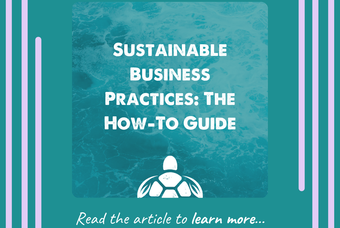

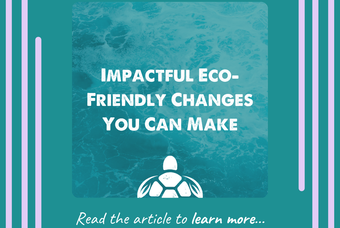
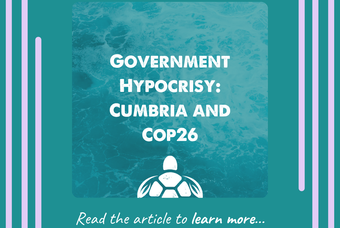
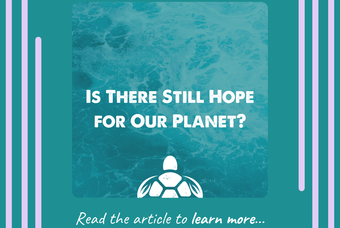
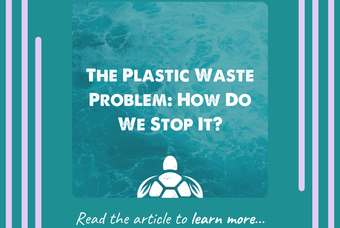
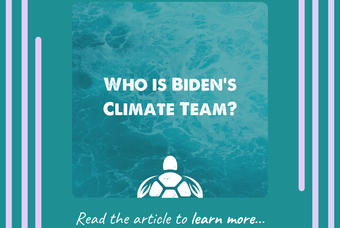
0 comments. Write a comment